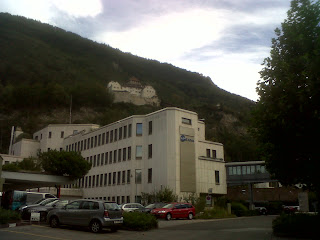In point of fact, the windmill was first used in Persia in the 7th century. Then the windmill spread throughout Europe. In the Netherlands itself, first windmill used around the 13th century. At the moment, there are still many locations in the Netherlands, which are still under water. By using the existing windmills in windmill building, the water is in the soil Netherlands diverted, channeled and contained so we can see when there is not much water here.
Further, the ground is still a little wet dried with windmills. With the advent of technology and architecture development, the use of windmills also been expanded. Around the 17th century, a revolution occurred in many European countries. Because of these factors, people in the Netherlands use windmills for other interests.
Not only used as a tool to divert and hold water, windmills also be used as one means of assistants in agriculture and industry. Windmills indeed played a significant role in many areas of the country.
Despite all the windmills in the Netherlands almost look the same, in fact there are various types of these windmills. According to its function, windmills divided into two types namely the interest of industrial windmills and windmills for water distribution.
Windmills for industry interests are varied, and they are named according to their use, eg windmills for sawing (sawmill ed.) Or windmills for grinding corn (cornmill ed.).
Type the old windmill is a windmill standard (standaardmolen or postmill in her English). These windmills can capture and remove a lot of wind, and especially with windmills installed in it, can help the process of water removal and drying faster.
Therefore, this type of windmill can be found in the center of the Netherlands, because very useful for wind and water removal process. There are still many other types of windmills, like for example a small windmill (wipmolen, ed.) And windmill tower (torenmolen, ed.)
Many uses of a windmill .. At first, windmills are used to assist the process of irrigating, grinding harvest, and sometimes also used as a means of information: if members of the family of the deceased owner windmill, windmill deviate from the position normally. Function of windmills now been increased, not only as a tourist attraction, windmills also have a wide range of uses, among others, to divert water and wind, wood polish, produce paper, removing oil from the seeds, etc..
Maintenance and renewal is done in some parts, like at the mill, or the roof. Windmill parts need to be renewed every 30 years, the roof every 60 years and parts are made from wood should be replaced every 10-20 years.
"In the treatment, a windmill does require a lot of time and requires approximately 7000 euros a year. But only 4000 euros which can be provided by the government and some donors for this windmill, "said Henk Berends, an expert in building windmills.
Exposure above illustrates clearly that the windmill is one of the products due to technological developments wheel revolution. [7] ancient windmill that was first developed in Persia was the forerunner of the modern windmill technology development. Could reap the debate about the shape of a horizontal windmill in the Islamic world and the vertical windmills in the Western world. But according to our argument, the discovery of windmills in Europe, especially the Netherlands is not independent, but rather are the result of the diffusion of technology from Asia Minor (Persia). Associated with different forms we argue that the existing windmills in Europe has been innovating and construction was completed. Axis direction can be adjusted eg by wind. Similarly, the wings can be adjusted according to the wind because of the swift development of technology and architecture. Historian Joseph Needham also wrote "windmill history really begins by Islamic culture" (Joseph Needham, 1986. Science and Civilization in China: Volume 4, Physics and Physical Technology, Part 2, Mechanical Engineering. Taipei: Caves Books Ltd. Vol 4). Given the vulnerable time when the first windmill appeared in Europe in the 12th century and 13th century Dutch first use. Joseph Needham thinks that "it is clearly spreading towards the west of the Iberian formerly derived from the Spanish Muslims". It refers to the diffusion of innovation
theory, popularized by Everett Rogers about how new ideas and technologies spread in a culture [8]. We argue that from Iran and Afghanistan windmill is slow spread widely throughout the Middle East and Central Asia, and later spread to China and India. Later in the period of the Crusades windmills spread to Europe.
So maybe you are interested to see the country and visit the windmills? I suggest to click here for a more detailed guide to your trip!!




















+van+IMG-20120913-00297.jpg)















